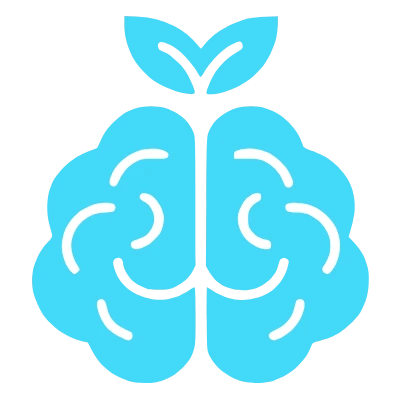Lewy body dementia begins with cognitive alterations similar to Alzheimer’s dementia and Parkinson’s disease, begins with a movement disorder.
In this article we are going to focus on Lewy body dementia, it is the second cause of degenerative dementia, with Alzheimer’s type dementia being the first.
What is Lewy Body Disease?
Lewy Body disease is a type of progressive dementia, it occurs as a result of the abnormal accumulation of proteins known as Lewy Bodies, formed mainly by alpha-synuclein, which groups together in deposits affecting the functioning of neurons.
Dementia with Lewy bodies and dementia associated with Parkinson’s disease seem to be variations of the same disorder, both cause damage to the brain and over time cause the same symptoms, but the onset is different.
Main symptoms of dementia with Lewy bodies
The symptoms of Lewy body dementia (hereinafter MCI) can vary widely, but the most common are:
- Marked fluctuations in the capacity for attention and concentration.
- Impairment of cognitive functions.
- Motor symptoms: rigidity, tremor, impaired balance and gait instability.
-
Hallucinations: mainly visual, with a great sense of reality.
MCI usually has a rapid progression and may also appear:
- Sleep disorder REM, with vivid dreams.
- Autonomic dysfunction: problems in temperature regulation, blood pressure, digestion.
Stages of Lewy Body Dementia
Early Phase
In the early phase of Lewy body dementia, early symptoms include:
- Memory problems: Difficulty remembering recent information.
- Difficulty concentrating and planning: Problems maintaining attention and organizing tasks.
- Muscle rigidity and tremors: Limited movements and tremors in extremities.
- Hallucinations and delusions: Perception of things that are not present and false beliefs.
- Behavioral disorders during REM sleep: Unusual movements and behaviors while dreaming.
These symptoms can vary between individuals and it is crucial to seek medical attention quickly due to the rapid progression of the disease. Those affected may experience everything from slowness in movement to episodes of hyperactivity and confusion, significantly impacting their daily activities.

Intermediate Phase of Lewy Body Dementia
At this stage, the disease progresses rapidly, aggravating psychological and behavioral symptoms. Highlights include:
-
Memory and language impairment:
- Increasing problems remembering and communicating.
- Decreased attention span and increased confusion.
-
Rigidity and motor instability:
- More rigid movements and balance problems.
- Frequent falls and greater physical dependence.
-
Constant disorientation and confusion:
- Persistent spatial and temporal disorientation.
- Frequent daytime sleepiness.
-
Hallucinations and delusions:
- Visual hallucinations and delusions common in 50-65% of patients.
-
Difficulty taking care of themselves:
- Problems performing basic daily activities.
- Dysphagia (difficulty swallowing) and speech impairment.
These symptoms significantly reduce the patient’s autonomy, requiring greater assistance and continuous care.
Final Phase of Lewy Body Dementia
In the final phase of dementia with Lewy bodies, the cognitive and motor symptoms become very severe. Here are the key points:
-
Severe cognitive and motor problems:
- Significant memory loss and a lot of confusion.
- Extreme muscle rigidity and difficulty swallowing.
- Intensified psychological symptoms:
Increased paranoia and agitation.
- Variable progression:
The disease can progress quickly or slowly, depending on the patient.
- Personalized treatment plan:
It is crucial to work with the medical team to develop appropriate support strategies.
- Duration of the terminal phase:
It varies between six months and two years, depending on the patient’s general health, the speed of the disease and any complications that may arise.
- Palliative care and constant support:
They are essential to maintain the patient’s quality of life at this stage.
In summary, this stage requires a comprehensive and personalized approach to offer the best possible support and maintain the patient’s quality of life.

How to care for a person with Lewy Body dementia?
To care for a person with dementiaa, it is important to know their history, their symptoms, their progression and their specific challenges in order to be able to approach care in a humane and efficient way for both the person and the caregiver.
As main points we highlight:
- Structured daily routines: to have a controlled environment, reduce anxiety, confusion, and promote orientation (temporal, personal and spatial). Regular sleep routines are important.
- Safe spaces: having an environment free of obstacles will help deal with mobility difficulties, removing carpets, cables, low tables, in general adapting the home to the needs that arise.
- Support products: in relation to mobility or the promotion of autonomy whenever possible.
- Emotional well-being: foster family, social and community relationships.
- Regular exercises: helps with motor symptoms and introducing strength exercises as part of daily routines promotes control and orientation.
- Regular medical check-up.
- Aassociations: and/or specific support groups, where you can find support for both the cared for and the caregiver. They can count on training and therapeutic and rehabilitative assistance activities.
Tips for caregivers
Caring for a person with Lewy body dementia requires a comprehensive approach due to the complexity and variety of symptoms. On the other hand, the caregivers, whether professional or family, relatives, friends, must take care of their own physical and emotional health. It is important to create a supportive environment, as we always emphasize, you have to take care of yourself to be able to take care of yourself.
Rest and ask for help when necessary, is a very important mantra to alleviate the burden of continuous care and benefits both the caregiver and the person cared for.






